On Gold Mountain Read online
Page 38
As Sissee talked to her guests, she consciously ignored the gift display, because when she glanced that way she saw only her father’s dowry presents. She had grown up surrounded by beautiful things, and while she may not have known an authentic Ming from a fake at first glance, she did have an eye for quality. When she looked at the pair of carved wooden chairs her father had sent over, she noticed that they were late nineteenth century—respectable pieces, but not great. When she looked at the full service of Canton ware—with its bread baskets and demitasse cups—she saw only “export curio.” When the china had arrived, she’d examined it carefully, comparing one piece to another in the store. Regarding two plates side by side, she saw the primitive quality of the painting, the brash color of the paste, and the thickness of her china.
The Canton ware brought bitterness to her heart. Her father had given her a “nice” dinnerware set, but she saw only the negatives. All she could think was that he’d gone into his store and selected a few meaningless things. But she was a realist. She knew she was lucky to have gotten anything at all. After this party, the china would be packed up in its original eight crates and never used.
After the gift-showing party, everyone got back into their cars to drive to Soochow for the first banquet given by the groom’s family. Many of the guests drove the short distance along L.A.’s recently completed first freeway. In Fong Yun’s car, pandemonium reigned. The small children played in the back. Gary, Uncle’s youngest son, opened the door and fell out. The family pulled over, picked up the boy, and drove to the French Hospital—almost the last remnant of Frenchtown—in Chinatown. Doctors refused to see the boy.
“We don’t have an emergency room,” the woman in admitting said. Yun suspected that the hospital staff didn’t want to treat a Chinese. In retrospect, it may have been that the family didn’t have insurance. Either way, the family got back into the car—with sisters weeping, a mother wailing, and Gary feeling increasingly the worse for wear—and drove to County General, where Stella had been taken years before for her diphtheria. When Sissee and Gilbert heard what had happened, their hearts sank. This was the worst possible omen. The boy turned out to be fine, however, and—as is the prerogative of newlyweds—Sissee and Gilbert’s spirits once again soared.
On this first night, Ed Leong supervised Soochow’s kitchen with facility and dispatch. As soon as the guests were seated, a crew of waiters brought out steaming bowls of shark’s-fin soup. Murmurs of approval swept through the room as the guests realized the lavishness of the feast about to be set before them. Like many brides, Sissee didn’t have time to enjoy the banquet prepared in her honor. She circulated from table to table, pouring tea into little cups set on a tray. As she passed it around, each guest took a cup and replaced it with lai see—the traditional good-luck paper money.
“May every corner of the universe extend its blessing,” said a well-wisher.
“Red eggs for next year!” another called out.
“Nine months and two minutes!” quipped another, to good-natured laughs.
The next morning, Sissee woke up in Gilbert’s bedroom in the house on Ivadel. She dressed in a flowered dress and brushed out her hair. She was no longer an old maid, but as she looked in the mirror, she saw that she wasn’t a young bride either. A few strands of gray already streaked her hair.
Downstairs, the Leongs waited. Sissee wouldn’t be able to make the traditional visit to the ancestral temple where a new daughter-in-law customarily pays respects to her husband’s ancestors. Sissee couldn’t stand before the wall of the temple in the village of Sun Wei, where the names of every Leong going back as far as memory were recorded, and recite, “I, Florence Leong, have come to join your family.” Instead, Sissee, like other young wives in other Chinatowns across the country, would perform the simpler and more easily accomplished tea-pouring ceremony.
Mrs. Leong stared sternly at Sissee, causing her to blush. Still, she didn’t falter in her actions. She boiled water, poured a little into a teapot, and swished it around to warm the ceramic. She measured the tea leaves out into the palm of her hand the way her mother, who had learned so many years ago from the single men who worked in the back of the shop in Sacramento, had taught her. After placing the leaves in the pot, Sissee poured the water over them and waited silently for them to steep. Keeping her eyes downcast, she poured the tea into each of her new family members’ cups—her father-and motherin-law first, then her brother-in-law, and finally into Gilbert’s sister’s glass. Sissee felt a sudden rush of anxiety; she so wanted to do this right. As each cup was poured and presented, her in-laws, in turn, gave her a gift of lai see or a piece of jewelry.
Leong Jeung, Gilbert’s father, observed the proceedings with openness in his eyes and heart. He was a simple, pleasant, thrifty man. Although people enjoyed his personal warmth and kindness, most were unaware of the good things he had quietly done. During the Depression he had written checks to the Kong Chow Association and the church so that many would be helped. He never sought recognition for his good deeds. In the Leong family, he was regarded as weak, for he didn’t seem to strive for the high ideals of his wife. But he knew this for what it was: he was a country man who spoke with a country dialect; his wife was a city girl with a city dialect. Anyone could see that she had come from a good family with class. For that reason he had chosen to stay in the background.
As he watched his daughter-in-law pour his tea, he allowed himself the thought that perhaps this alliance would work. He looked across the table at his wife. He knew he would hear plenty about the girl’s shortcomings in the months ahead, but for now his wife seemed satisfied. If this Sissee could perform the rest of her duties as well as the tea-pouring, then perhaps his son hadn’t made such a bad choice after all.
Soon after their marriage, Sissee accompanied Gilbert first to Arizona, then to Tennessee, where he was stationed. Within weeks of Sissee’s departure, Ticie took to her bed. She sent for an herbalist and drank healing teas. Nothing helped. She asked everyone in the family not to let Sissee know. “Let her be happy,” Ticie said. “I want Sissee to enjoy her honeymoon and get to know Gilbert.” When Ticie got sicker, she moved in with Ray and Leona.
This time gave Ticie a chance to see how much Ray had separated himself from the rest of the family in the way he lived. His elegant house nestled in Nichols Canyon, and was shaded by eucalyptus trees. She stayed in the Japanese-style teahouse by the pool. In the evenings, when he came home from the factory, he would come and visit her. With his highball in hand, he would sit in a chair, gazing out at the twinkling lights of the canyon, and talk. Frequently his thoughts drifted to his father. “I can’t forgive Pa,” Ray would say.
Ticie would think back to when Ray was a boy and chafed at having to sell jade rings door to door, make sewing baskets, or put furniture together. He’d eventually grown out of that dissatisfaction to enjoy his father’s money during the late teens and early twenties. But the discovery that Suie had married Ngon Hung had rekindled Ray’s ambivalence toward his father. In all these years it hadn’t dissipated.
“If I can forgive him, why can’t you?” Ticie asked.
“After what he put us through? After what he did to you? Ma, I just can’t. I never will.”
“Maybe when I’m gone you’ll be able to make amends. You never know. One day you may need his help.”
But Ray shook his head. “I’ll never take anything from him.”
And even as Ticie recognized that Ray, of all the children, was the most like his father, she also knew there was nothing she could say to change his feelings.
At the beginning of December 1942, six months after the wedding between Sissee and Gilbert, Ticie went home to Maplewood. In mid-December, Eddy and Stella took Ticie to Mount Sano Hospital. Over the next two weeks, Ticie refused to see any of her grandchildren, not even Richard. On January 4, 1943, Ticie died of a cerebral hemorrhage owing to advanced arteriosclerosis and hypertension. She was sixty-six years old.
; When Sissee came back from Memphis for the funeral, she was beside herself with grief. “How could I have not known?” Sissee wept. “Why couldn’t we have had more time together? I wanted to be able to take care of her.” She would not be mollified or consoled.
It is a measure of how devastated by Ticie’s death were all of her children and grandchildren that none of them remember much about the funeral except that it was held in the Little Church of the Flowers at Forest Lawn in Glendale. Stella doesn’t remember going to the funeral at all, though other people say that she was definitely there. Pollyanne, Ray’s daughter, remembers spending most of the service in the bathroom with Stella, trying to comfort Sissee. Chuen, Fong See’s eldest son from the marriage to Ngon Hung, knows that his father and older sister, Jong Oy, went to the funeral, but when they came home the service wasn’t discussed, perhaps out of deference to Ngon Hung.
Soon after the funeral, Sissee went through her mother’s address book and wrote notes to those who hadn’t attended the funeral. By return mail, the family received a letter of condolence from an Aunt May Pruett of Eureka, California. Was she Ticie’s aunt? Was she the children’s aunt? Was she the wife of one of Ticie’s mean-spirited brothers? Now that Ticie was gone, the children would never know the answer, but just reading the letter gave them insight into what she had fled from all those years ago. “You can all be comforted by the thought that she is not dead but sleepeth as Jesus says in the Bible,” Aunt May wrote. “You will see her and know her again. There is no Death, for God is our life.” They puzzled over this missive and decided not to write back.
The general vagueness about Ticie’s death crosses over into a vagueness about the rest of 1943. What is certain is that Milton was finally completely in charge of the F. Suie One Company. He had also met a young woman, Irene “Sunny” Rockwell, a white woman who had rented a little studio behind the F. Suie One Company. Ming said that the two of them were making T’ang horses to sell until he could get authentic pieces from China. Gossips in Chinatown had another idea: Ming and Sunny were making something all right, and it wasn’t T’ang horses!
Ray and Bennie were entrenched in the See Manufacturing Company. Sissee, newly married and living with Gilbert in the south, was no’ longer active in Dragon’s Den. Which left Eddy—who now had his December-seventh beard, a goatee that he began growing the day the Japanese bombed Pearl Harbor and maintained until his death—to deal with Dragon’s Den alone. Stella has said that Dragon’s Den closed because Sissee was “gone” and “somebody died.” Eddy liked to say that he decided to close Dragon’s Den when he asked a cook to mop the floor and the man refused outright, knowing full well that with the war on, the Chinese were finally getting decent jobs “out there.” Whatever the reason, Dragon’s Den closed in 1943, and Eddy went to work at See Manufacturing as an employee to get a deferment. Although Eddy and Dragon’s Den had carried the entire See family through the Depression, he was no longer contributing to the family pot, a fact that was not lost on his brothers.
In their grief, the family ignored the visit of Generalissimo Chiang Kaishek’s wife, Soong Mei-ling, to the United States, where she campaigned for both war funds and the repeal of the exclusion laws. In Washington, D.C., she addressed Congress and met with President Roosevelt. On her way back to China, she stopped in Los Angeles. This visit highlighted years of work against the Japanese aggressor—the fund-raising of the New Life Movement, the Rice Bowl Campaign, the Seven-Seven Campaign (named for the 7/7/37 bombing of the Marco Polo Bridge in Peking), the outstanding sales in war bonds, and the $250,000 raised by the 1941 Moon Festival. All in all, the Chinese in Los Angeles had raised more money than had the larger Chinatowns of either New York or San Francisco. Madame Chiang Kaishek did her best to honor those efforts.
On March 31, 1943, she appeared at the Hollywood Bowl, where, author Garding Liu noted, humanity hung to the hillsides like bees swarming in a tree. Madame Chiang was a Wellesley graduate and the most sophisticated woman the four thousand Chinese who attended could ever remember seeing. She appeared hatless before the throng, and her black hair glistened in the sun. Her ears were pierced with silver buttons. She wore a long black satin cheongsam lined in pale blue. (Though hardly as important as fund-raising or the campaign for repeal, Madame Chiang’s visit started a fad among the young Chinese women of the community; for the first time, on special occasions they proudly donned Chinese dresses modernized to show the arm and accentuate the figure.)
Like the Chinese in the audience, Madame Chiang also wore pins on her lapel: one was the silver wings of the Chinese air force; the other was a ribbon showing the national colors of red, white, and blue. After the speech, Mayor Fletcher Bowron escorted her to a parade in her honor that passed along Macy Street in Chinatown. Later the Chinese Benevolent Association received her. These activities—along with her beauty, her elegance, her grace, her education—were dutifully followed in the press and, perhaps, swayed the readership of the country into believing that, indeed, the Chinese race was not so bad after all.
In a message to Congress, President Roosevelt called exclusion a “historic mistake.” On December 17, 1943, Roosevelt signed the Magnuson Act, repealing the old exclusion laws and allowing Chinese to be naturalized. Actor Keye Luke, who had earned a reputation as Charlie Chan’s Number One Son, announced that he wanted to be the first Chinese to be naturalized. However, on the day Luke had to appear in court, he was doing a picture with Wallace Beery, and a Chinese doctor became the first to be naturalized. Amused by this, newspaper columnist Walter Winchell carried the following item: “Keye Luke, Charlie Chan’s Number One Son, just missed being Number One Naturalized U.S. Citizen.”
In the heady days following repeal, no one paid much attention to the fine print, which continued the annual quota established in 1924. As a result, even while China and the United States fought side by side, Immigration and Naturalization officials still found it difficult to find “acceptable” and “qualified” Chinese to fill the annual quota of 105. In actuality, during the first ten years of repeal, the U.S. government found an annual average of only fifty-nine Chinese acceptable for admittance to the country. In addition, between 1944 and 1952, only 1,428 Chinese Americans—after presenting documentation stating that they were here legally, and passing tests on English competency, American history, and the Constitution—were naturalized.
The anti-miscegenation laws carried on, as did the laws barring Chinese from buying property. More immediately troubling were the cases of Caucasians mistaking Chinese for Japanese. Bennie, whose home in Beverly Hills had been bought in his wife’s name, worried about what would happen to families of Chinese ancestry. He cautioned his daughters, “Don’t tell the neighbors about your ancestry. Don’t tell the people at school you have Oriental blood in you. Don’t tell anyone anything.” His daughter Marcia remembers those days: “I grew up thinking, It’s a secret. Don’t tell anyone. It’s a no-no. Not because I was ashamed of being a quarter Chinese, because I’m not. We just didn’t know what would happen.”
And the war pressed on. Angelenos grew accustomed to blackouts. Radio spots such as “Viva Victory” reminded citizens to behave, be careful with their rations, and buy bonds. Jeeps zipped in and out of traffic. GIs streamed through Union Station, rode the Red Car out to the beach, and went to the Hollywood Canteen, hoping for a dance with Betty Grable. Sometimes they simply crossed Alameda and ventured into Chinatown.
Since many of the GIs were “seeing the world” fof the first time, they got up their courage to sample Chinese food. Some restaurant owners did something they never would have thought possible back during the Depression: they closed and locked their doors to keep the crowds out. The restaurants were simply stretched beyond their capabilities; supplies were impossible to get, and most of the help had either gone to war or into defense work. The Leong family, which had opened a second Soochow in New Chinatown, closed it for lack of dishwashers, busboys, and waiters; Gilbert and Elmer were in the service a
nd Ed was working at See Manufacturing for his deferment. The Leong family gave the New Chinatown space to the USO for the duration, and focused their energies on the original Soochow.
On April, 30, 1945, Hitler committed suicide. The very next day, Sissee gave birth to a baby girl, Leslee Ann Leong, in Memphis. One week later, German resistance ceased. On August 6, 1945, America dropped the bomb on Hiroshima, followed three days later by a second bomb on Nagasaki. On August 14, Japan unconditionally surrendered. The war was finally over, and the boys started coming home. Soon Sissee, Gilbert, and Leslee would be reunited with their families back in Los Angeles.
PART V
CHAPTER 17
HOLLOW BAMBOO
1946–47
BETWEEN 1940 and 1950, the population of Los Angeles doubled, with nearly eighty percent of the people migrating from the Midwest. Los Angeles was now home to more Iowans than lived in Des Moines, more Indianans than in Terre Haute, and more Nebraskans than in Lincoln. Where once fields of lima beans or asparagus had grown, now hospitals, parking lots, and row after row of tract houses appeared to spring up overnight. The numbers of automobiles also mushroomed. Angelenos owned more cars than the number registered in Alabama, Arizona, Arkansas, and Colorado combined, with the result that Los Angeles now ranked as the country’s number-one smog city.
During the war, Los Angeles had established itself as “the arsenal of democracy.” Its aircraft industry, the largest in the nation, was the city’s number-one moneymaker and employer. But the city also ranked first in other industries. Los Angeles produced more movies than any other city in the world. As Time magazine reported, Los Angeles “lands more fish than Boston or Gloucester, makes more furniture than Grand Rapids, assembles more automobiles than any other city but Detroit, makes more tires than any other city but Akron. It is a garment center (bathing suits, slacks, sports togs) second only to New York. It makes steel in its backyard. Its port handles more tonnage than San Francisco.” What most people didn’t know was that the county was still the richest and most profitable agricultural and dairy area in the nation.

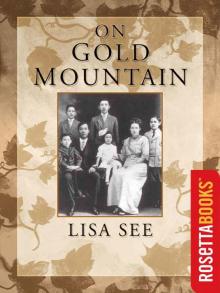 On Gold Mountain: The One-Hundred-Year Odyssey of My Chinese-American Family
On Gold Mountain: The One-Hundred-Year Odyssey of My Chinese-American Family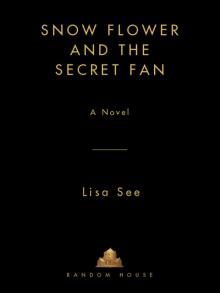 Snow Flower and the Secret Fan
Snow Flower and the Secret Fan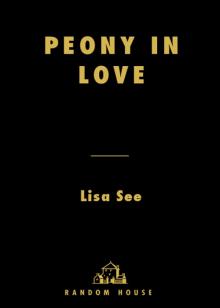 Peony in Love
Peony in Love Flower Net
Flower Net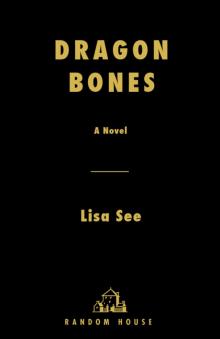 Dragon Bones
Dragon Bones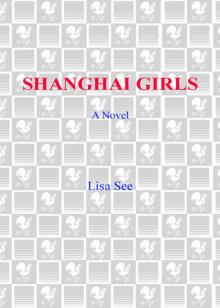 Shanghai Girls
Shanghai Girls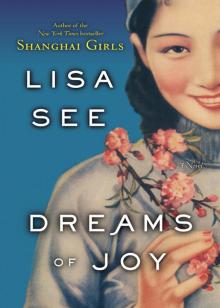 Dreams of Joy
Dreams of Joy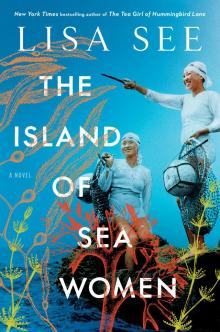 The Island of Sea Women
The Island of Sea Women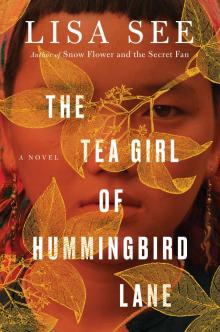 The Tea Girl of Hummingbird Lane
The Tea Girl of Hummingbird Lane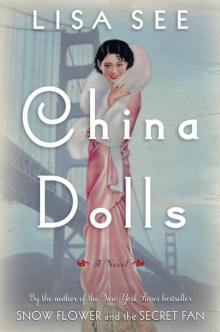 China Dolls
China Dolls The Interior
The Interior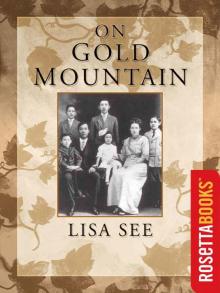 On Gold Mountain
On Gold Mountain